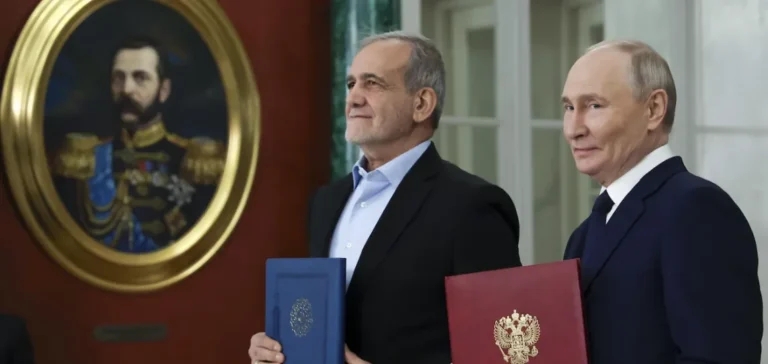Russian President Vladimir Putin will meet his Iranian counterpart Massoud Pezeshkian in China on Monday to discuss Iran’s nuclear program. The Kremlin’s announcement comes amid growing tensions over compliance with the 2015 Vienna agreement, known as the Joint Comprehensive Plan of Action (JCPOA). The European E3 countries — France, Germany and the United Kingdom — believe Iran has failed to meet its obligations and have triggered the snapback mechanism to restore sanctions.
A reactivated sanctions mechanism
In a letter to the United Nations Security Council, the three European powers stressed that available evidence shows significant non-compliance by Iran. The mechanism opens a 30-day period at the end of which all sanctions lifted ten years ago could be reinstated. The European Union, also a party to the JCPOA, participated in the latest talks in Geneva but was unable to prevent the decision announced by the E3.
Russia steps in
Moscow reacted strongly, denouncing a destabilizing decision and calling for a return to negotiations. The Russian Foreign Ministry warned that the reimposition of sanctions could have irreversible consequences for regional and international stability. Russia, which cooperates closely with Iran on several energy and geopolitical issues, insists on the need for constructive dialogue to avoid further escalation.
Tehran’s position
Tehran denies any military ambition and recalls its right to develop a civilian nuclear program. According to the International Atomic Energy Agency (IAEA), Iran has already enriched uranium to 60%, well beyond the 3.67% limit set by the JCPOA. The IAEA also confirmed in February 2023 a one-time enrichment level of 84%, presented by Iran as a technical error linked to the accumulation of highly enriched uranium in some centrifuge cascades. Although Tehran claimed it did not intend to reach this level, the incident confirmed its technical ability to approach the military threshold.
The stages of enrichment
Natural uranium contains only 0.7% uranium-235, the fissile isotope sought for energy or military purposes. Raising this concentration to 3.67%, the threshold authorized for civilian use, represents the longest and most complex stage of enrichment. Once this step is achieved, progressing to 20% and then 60% requires far less additional work. Finally, reaching 90% — the level required for the manufacture of a nuclear weapon — becomes technically much faster. Crossing the 20% threshold, which is not necessary for civilian purposes, therefore raises absolute distrust from the International Atomic Energy Agency (IAEA), the European E3 countries, Israel, and the United States, as it is viewed as a potential signal of military intentions.
A major strategic issue
The contrast between civilian and military uses of enriched uranium highlights the sensitivity of Iran’s program. While fuel for nuclear power plants usually ranges between 3 and 5%, the technical proximity to the 90% required for a weapon fuels international concern. The meeting planned in China between Vladimir Putin and Massoud Pezeshkian takes place in a sequence where diplomatic and military balances converge. The future of the JCPOA, already weakened since the withdrawal of the United States in 2018, now depends on the ability of the parties to reach a compromise.






















